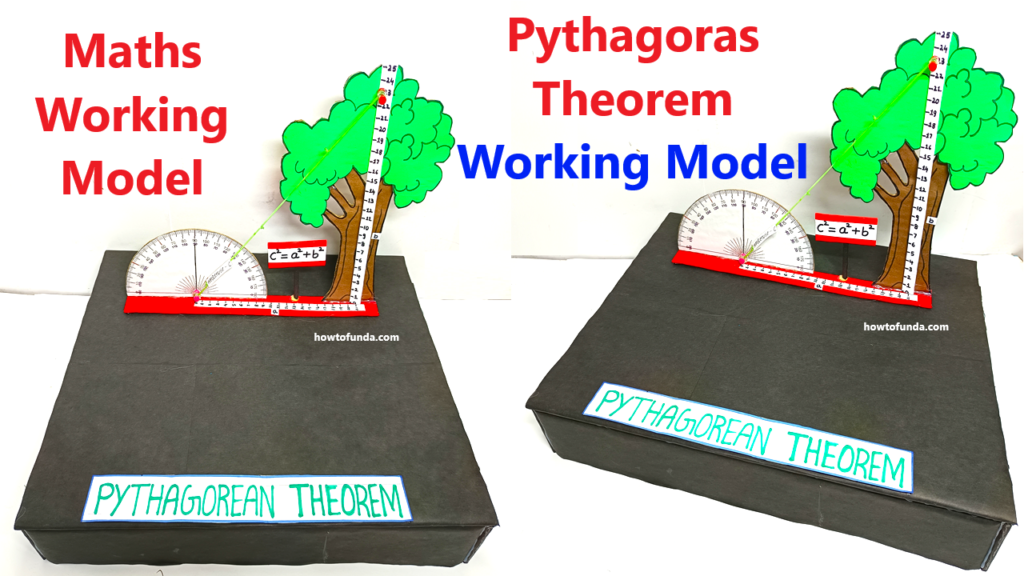Here’s a creative Pythagoras Theorem working model idea using a tree theme, combining math with a nature-inspired design. This project visually demonstrates the theorem with an engaging setup.

Concept:
The model illustrates Pythagoras’ Theorem (a2+b2=c2a^2 + b^2 = c^2a2+b2=c2) using a tree and its surroundings. The tree trunk and the ground form the two legs of a right triangle, while the hypotenuse is represented as the ladder leaning against the tree.
Materials Needed:
- Cardboard: For the base, tree, and ground.
- Colored Paper: For decorating the tree, ground, and squares.
- Thin Sticks or Cardboard Strips: To represent the ladder (hypotenuse).
- Glue/Tape: To fix the parts together.
- Markers/Pens: For writing labels and decorations.
- Scissors/Cutter: For cutting shapes.
- Ruler: To measure lengths and ensure precision.
Step-by-Step Instructions:
1. Base Setup:
- Cut a rectangular piece of cardboard (e.g., 12 x 18 inches) to serve as the base.
- Cover it with green and brown paper to resemble grass and soil.
2. Create the Tree:
- Make the tree trunk from cardboard or rolled brown paper (around 6 inches tall).
- Add a tree canopy by cutting a circular shape from green paper or cardboard and attaching it to the top of the trunk.
- Fix the tree on one side of the base.
3. Add the Ground and Right Triangle:
- Draw a horizontal line (the ground) from the base of the tree trunk, representing one leg of the triangle (aaa).
- The tree trunk itself will be the vertical leg (bbb).
- Draw or attach a diagonal line (a stick or strip) from the ground to a point on the tree trunk to form the hypotenuse (ccc).
4. Create the Squares:
- Cut three colored paper squares to represent a2a^2a2, b2b^2b2, and c2c^2c2:
- The square on the horizontal leg (aaa) should have sides equal to the length of the ground leg.
- The square on the vertical leg (bbb) should have sides equal to the height of the tree trunk.
- The square on the hypotenuse (ccc) should have sides equal to the hypotenuse length.
- Attach the squares beside their respective triangle sides.
5. Add a Ladder:
- Create a small ladder from thin sticks or strips of cardboard to lean against the tree. This will act as the hypotenuse (ccc).
- Ensure the ladder fits perfectly within the triangle.
6. Label the Triangle:
- Write aaa, bbb, and ccc on the triangle’s sides.
- Label the squares as a2a^2a2, b2b^2b2, and c2c^2c2.
- Optionally, write the formula: a2+b2=c2a^2 + b^2 = c^2a2+b2=c2 at the bottom of the base.
7. Decorate the Model:
- Add details like flowers, grass, or animals near the tree to make the model visually appealing.
- Use colored markers or paper for extra decoration.
Demonstration:
- Explain that the tree trunk and ground form the two legs of a right triangle, and the ladder represents the hypotenuse.
- Highlight the areas of the squares to show that a2+b2=c2a^2 + b^2 = c^2a2+b2=c2.
- Measure the sides with a ruler to validate the theorem numerically.

